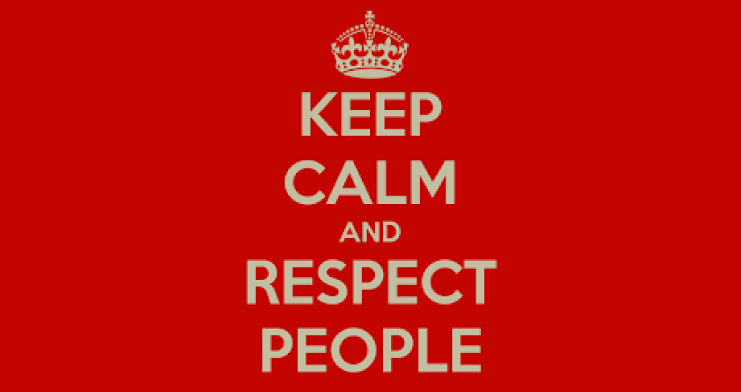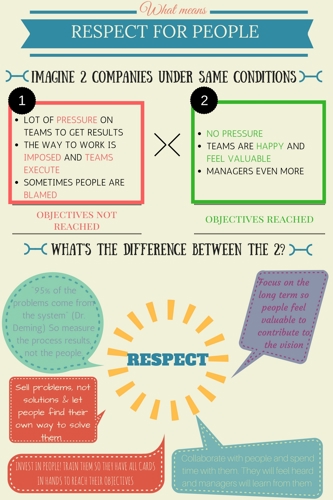What means respect for people

Let’s compare two situations in two different organizations that experience the same market pressure.
In the first organization, the pressure comes from the top-management and drills down to the shop floor through all management levels. Each level puts pressure on the next one to reach the objective by giving guidelines on how to do their work. Then each level waits for the results to appear, without necessarily taking into account people’s skills and competencies. The result? Objectives are frequently not reached and, as a natural reaction, some managers might unconsciously start blaming people.
In the second organization, the pressure is as present as in the first one. However, everyone seems happy. People feel in an inspiring work environment and deliver top-level work. As a consequence, objectives are met.
At Improof Solutions, we believe that the key difference between these two organizations is Respect for People
In our opinion, here is what Respect for People means in a Lean culture:
1. Sell problems, not solutions and let people find their own
As we have already discussed in a previous article (Sell Problems and Ask Solutions), managing by output means that managers identify problems through observations or discussions, share them with their teams and ask for ideas and solutions. People start feeling valuable.
2. Invest in people
Investing in people means giving them all cards in hand to reach defined objectives. Managers should invest in training and developing people skills and competencies that are required to complete the job.
3. Collaborate and spend time with people
Ensuring that team members have all cards in hand implies knowing what cards are missing to meet their objectives. For this reason managers should spend time with team members on the work place and collaborate with them. By doing so, managers will discover what obstacles and constraints team members experience in day-to-day work. They will also discover what each one of them needs as support or help to find solutions and reach their teams’ objectives.
4. Measure results, not people
What happens if managers measure team members’ performance? They then tend to blame failures on the people and not on the process. However, managers should be aware of Dr. Edward Deming’s words: “95% of the problems belong to the system, not to the people”. Managers should focus on measuring and optimizing the system or the process to maximize results.
5. Focus on the long term
Let’s imagine a manager succeeds in the four previous points but reaches objectives that are short term oriented. What’s the impact on the team? In the beginning, they will probably be satisfied by the results and their job environment. But on the longer term, they will not be able to make the link between their day-to-day work and the long-term vision and goals of the organization. It is managers’ responsibility to sell problems and ask solutions that are meaningful for the organization in the long term, meaning that results have a positive impact on the organization’s vision and goal.
Want a visual summary of this article? Have a look at the following infographic J

By Gilles Kartheuser, Consultant at Improof Solutions

